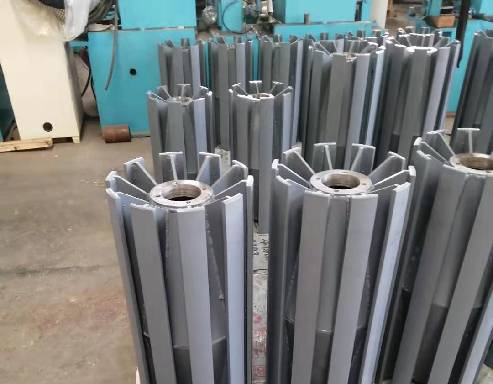 Afrikaans
Afrikaans  Albanian
Albanian  Amharic
Amharic  Arabic
Arabic  Armenian
Armenian  Azerbaijani
Azerbaijani  Basque
Basque  Belarusian
Belarusian  Bengali
Bengali  Bosnian
Bosnian  Bulgarian
Bulgarian  Catalan
Catalan  Cebuano
Cebuano  Corsican
Corsican  Croatian
Croatian  Czech
Czech  Danish
Danish  Dutch
Dutch  English
English  Esperanto
Esperanto  Estonian
Estonian  Finnish
Finnish  French
French  Frisian
Frisian  Galician
Galician  Georgian
Georgian  German
German  Greek
Greek  Gujarati
Gujarati  Haitian Creole
Haitian Creole  hausa
hausa  hawaiian
hawaiian  Hebrew
Hebrew  Hindi
Hindi  Miao
Miao  Hungarian
Hungarian  Icelandic
Icelandic  igbo
igbo  Indonesian
Indonesian  irish
irish  Italian
Italian  Japanese
Japanese  Javanese
Javanese  Kannada
Kannada  kazakh
kazakh  Khmer
Khmer  Rwandese
Rwandese  Korean
Korean  Kurdish
Kurdish  Kyrgyz
Kyrgyz  Lao
Lao  Latin
Latin  Latvian
Latvian  Lithuanian
Lithuanian  Luxembourgish
Luxembourgish  Macedonian
Macedonian  Malgashi
Malgashi  Malay
Malay  Malayalam
Malayalam  Maltese
Maltese  Maori
Maori  Marathi
Marathi  Mongolian
Mongolian  Myanmar
Myanmar  Nepali
Nepali  Norwegian
Norwegian  Norwegian
Norwegian  Occitan
Occitan  Pashto
Pashto  Persian
Persian  Polish
Polish  Portuguese
Portuguese  Punjabi
Punjabi  Romanian
Romanian  Russian
Russian  Samoan
Samoan  Scottish Gaelic
Scottish Gaelic  Serbian
Serbian  Sesotho
Sesotho  Shona
Shona  Sindhi
Sindhi  Sinhala
Sinhala  Slovak
Slovak  Slovenian
Slovenian  Somali
Somali  Spanish
Spanish  Sundanese
Sundanese  Swahili
Swahili  Swedish
Swedish  Tagalog
Tagalog  Tajik
Tajik  Tamil
Tamil  Tatar
Tatar  Telugu
Telugu  Thai
Thai  Turkish
Turkish  Turkmen
Turkmen  Ukrainian
Ukrainian  Urdu
Urdu  Uighur
Uighur  Uzbek
Uzbek  Vietnamese
Vietnamese  Welsh
Welsh  Bantu
Bantu  Yiddish
Yiddish  Yoruba
Yoruba  Zulu
Zulu Jul . 10, 2024 20:25
Back to list
Different types of pulley lagging and their characteristics and applications
Pulley lagging is an essential component of belt conveyor systems, as it provides traction between the conveyor belt and the drive pulley. This helps to prevent the belt from slipping and ensures smooth and efficient operation of the conveyor system. There are different types of pulley lagging available, each with its own unique features and benefits.
One common type of pulley lagging is rubber lagging. Rubber lagging is made of high-quality rubber material that is specifically designed to increase friction and traction between the belt and pulley. This type of lagging is highly durable and can withstand heavy loads and abrasive materials. Rubber lagging is ideal for applications where high friction is required, such as in mining and heavy-duty industries.
Another type of pulley lagging is ceramic lagging. Ceramic lagging is made of alumina ceramic tiles that are embedded in a rubber matrix. This type of lagging is highly wear-resistant and provides excellent grip between the belt and pulley. Ceramic lagging is ideal for applications where high abrasion resistance is required, such as in coal mining and cement industries

types of pulley lagging. Metal lagging is another type of pulley lagging that is made of metal studs or bars that are embedded in a rubber matrix. Metal lagging is highly durable and provides excellent traction between the belt and pulley. This type of lagging is ideal for applications where high tensile strength and impact resistance are required, such as in recycling and aggregate industries. In addition to these types of pulley lagging, there are also specialty lagging options available, such as diamond pulley lagging and diamond groove pulley lagging. These types of lagging are designed to provide maximum grip and traction between the belt and pulley, even in the most demanding applications. Overall, the type of pulley lagging to use will depend on the specific requirements of the application and the environment in which the conveyor system operates. It is important to select the right type of lagging to ensure smooth and efficient operation of the conveyor system and to minimize downtime and maintenance costs. In conclusion, pulley lagging is a critical component of belt conveyor systems, and there are different types of lagging available to suit various applications. Whether you need high friction, abrasion resistance, or impact resistance, there is a type of pulley lagging that will meet your needs. By selecting the right type of pulley lagging, you can ensure the reliable and efficient operation of your conveyor system.

types of pulley lagging. Metal lagging is another type of pulley lagging that is made of metal studs or bars that are embedded in a rubber matrix. Metal lagging is highly durable and provides excellent traction between the belt and pulley. This type of lagging is ideal for applications where high tensile strength and impact resistance are required, such as in recycling and aggregate industries. In addition to these types of pulley lagging, there are also specialty lagging options available, such as diamond pulley lagging and diamond groove pulley lagging. These types of lagging are designed to provide maximum grip and traction between the belt and pulley, even in the most demanding applications. Overall, the type of pulley lagging to use will depend on the specific requirements of the application and the environment in which the conveyor system operates. It is important to select the right type of lagging to ensure smooth and efficient operation of the conveyor system and to minimize downtime and maintenance costs. In conclusion, pulley lagging is a critical component of belt conveyor systems, and there are different types of lagging available to suit various applications. Whether you need high friction, abrasion resistance, or impact resistance, there is a type of pulley lagging that will meet your needs. By selecting the right type of pulley lagging, you can ensure the reliable and efficient operation of your conveyor system.
Latest news
-
Revolutionizing Conveyor Reliability with Advanced Rubber Lagging PulleysNewsJul.22,2025
-
Powering Precision and Durability with Expert Manufacturers of Conveyor ComponentsNewsJul.22,2025
-
Optimizing Conveyor Systems with Advanced Conveyor AccessoriesNewsJul.22,2025
-
Maximize Conveyor Efficiency with Quality Conveyor Idler PulleysNewsJul.22,2025
-
Future-Proof Your Conveyor System with High-Performance Polyurethane RollerNewsJul.22,2025
-
Driving Efficiency Forward with Quality Idlers and RollersNewsJul.22,2025
OUR PRODUCTS





























